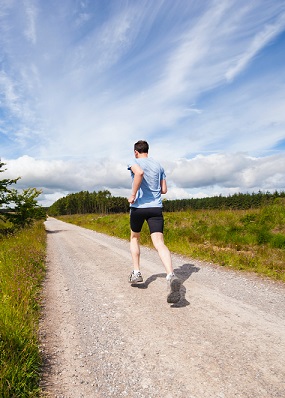Speed-walking or racewalking is an Olympic sport. This year, it is gaining some attention as Mexico continues to show its power as a competitor and champion in the endurance activity. While you might not follow the Olympics and might not care who is the reigning speed-walking champion, you might be interested in the health benefits from the activity. Speed-walking is a low-impact, moderate aerobic activity that can improve overall health and mobility. Additionally, it can benefit weight loss goals.
Why Speed-Walking Is Healthy

Although the activity is associated with intense cardio, speed-walking is likely more related to moderate levels of oxygen and blood flow. That means it can help with circulation, allowing your heart to beat at a slower pace and helping you avoid the shortness of breath that can be common with vigorous cardio workouts.
As opposed to high-intensity cardio workouts, speed-walking offers lower levels of oxygen intake that help the heart and blood vessels do their jobs. The low intensity of the exercise means you can sustain the activity for a longer period without becoming winded or fatigued. Therefore, speed-walking ultimately provides a longer duration exercise at sustained levels, which is beneficial to weight loss, balance, and mobility.
How Does Speed-Walking Compare to Other Exercises?

Categorized in the same class of low-impact aerobic activities like walking, jogging, and running, speed-walking is an interval-type workout that can help you build strength and endurance in your muscles, work on your balance, improve your mood, and improve your sleep. In addition, it can help you burn calories and reduce stress.
While speed-walking is an easy and enjoyable exercise for any age and fitness level, you should still be cautious and do the proper research, ensuring you are physically ready for the activity. Like a long-distance run, speed-walking can help build stamina and endurance but can also lead to injuries if you are not properly trained and are not mindful of your body. Before starting any new exercise routine, talk to your doctor to determine if it is a good fit.
The Benefits of Speed-Walking

There are many benefits to this physical activity, and it does not need to take up a lot of time to reap the rewards: 30 minutes per day or 150 minutes per week. While the exercise is an endurance workout, it has several benefits beyond stamina. Researchers have found that speed-walking can reduce the risks associated with osteoarthritis and osteoporosis by strengthening the bones and muscles in the legs. Additionally, walking has been shown to boost heart rate and increase blood flow to muscles, aiding in cardiovascular fitness. Walking can also improve insulin sensitivity and aid weight loss efforts.
Speed-walking might be experiencing some added interest from Olympic coverage, but it will always be an efficient form of exercise. The simple truth is that walking is more accessible than running, and it is less dreaded than other forms of aerobic activity. If you are interested in burning calories and improving cardiovascular health while increasing your stamina, speed-walking is for you.
What are some other unique exercises you have heard of and want to try?

